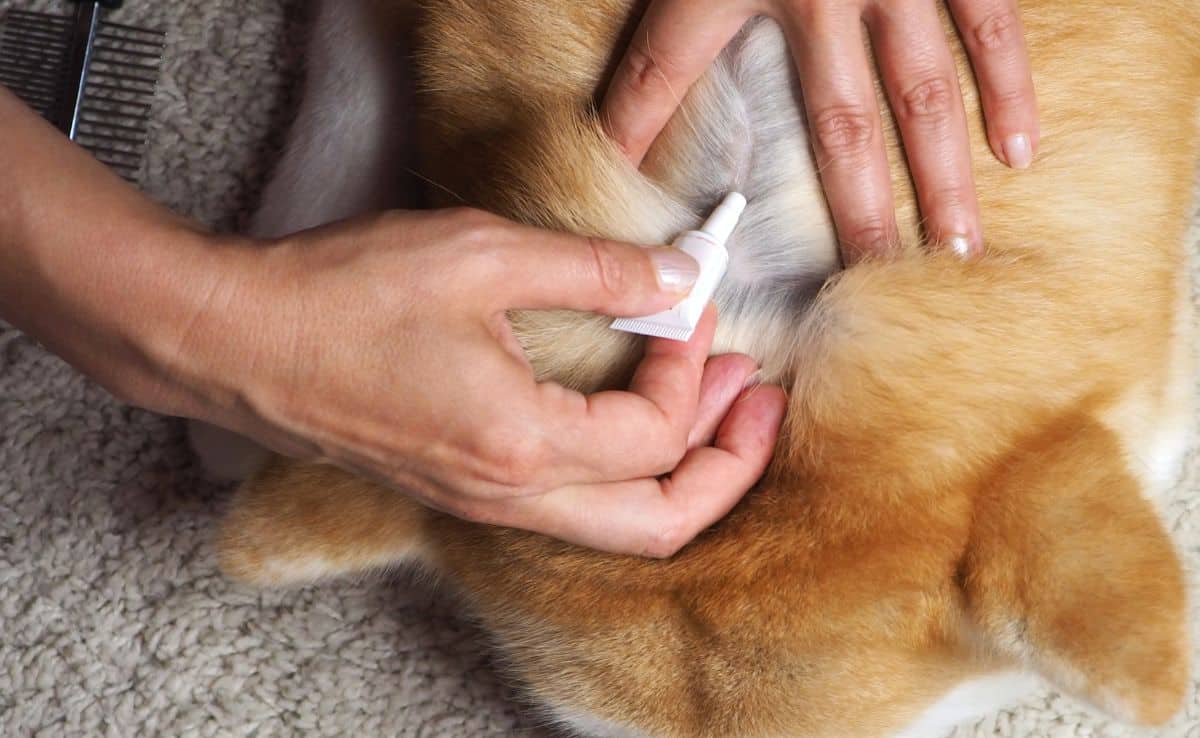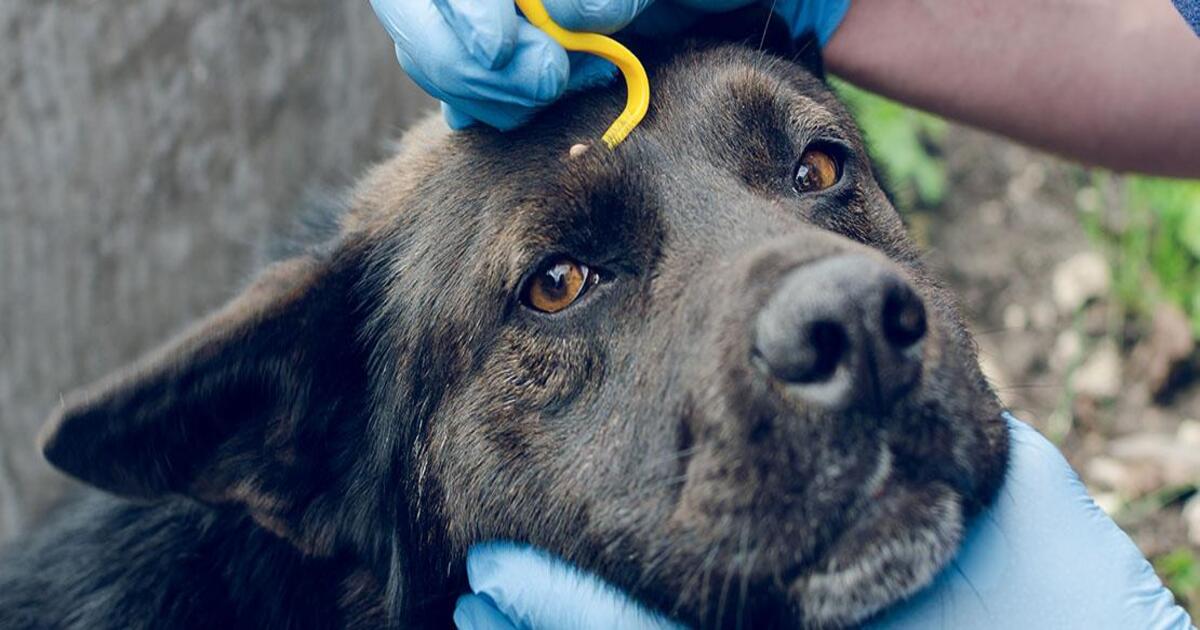Home>Health & Wellness>Common Health Issues>If Your Dog Has Mites, What Kind Of Flea And Tick Medicine Would Treat It


Common Health Issues
If Your Dog Has Mites, What Kind Of Flea And Tick Medicine Would Treat It
Published: February 3, 2024
Discover the best flea and tick medicine for treating mites in dogs. Learn how to address common health issues with effective solutions.
(Many of the links in this article redirect to a specific reviewed product. Your purchase of these products through affiliate links helps to generate commission for Pawsomeoldies.com, at no extra cost. Learn more)
Table of Contents
Introduction
When it comes to our furry companions, their health and well-being are of utmost importance. As responsible pet owners, we strive to ensure that our dogs are free from any discomfort or health issues. One common health concern that can affect dogs is the presence of mites. These tiny parasites can cause irritation, itching, and other unpleasant symptoms for our beloved pets. Fortunately, there are effective treatments available to address mite infestations and provide relief for our canine friends.
Mites are microscopic creatures that belong to the arachnid family, and while they are often associated with skin problems in dogs, they can also lead to more serious health issues if left untreated. As pet owners, it's essential to be aware of the signs of mite infestations and understand the various treatment options available. By staying informed and proactive, we can ensure that our dogs receive the care they need to overcome mite-related issues and maintain optimal health and comfort.
In this comprehensive guide, we will delve into the world of mites in dogs, exploring the different types of flea and tick medicine that can effectively treat mite infestations. By gaining a deeper understanding of these tiny pests and the available treatment options, you'll be better equipped to make informed decisions regarding your dog's health. So, let's embark on this informative journey to discover the best ways to address mites in dogs and provide them with the relief they deserve.
Understanding Mites in Dogs
Mites are minuscule parasites that can wreak havoc on a dog's skin and overall well-being. These tiny creatures belong to the arachnid family and can cause a range of issues, from mild irritation to more severe skin conditions. There are several types of mites that can affect dogs, with the most common being sarcoptic and demodectic mites.
Sarcoptic mites, also known as scabies mites, are highly contagious and can spread rapidly among dogs. These mites burrow into the skin, leading to intense itching, redness, and hair loss. Dogs affected by sarcoptic mites often exhibit relentless scratching and discomfort, indicating the presence of these troublesome parasites.
On the other hand, demodectic mites, also referred to as demodex or red mange mites, are naturally present on the skin of most dogs. However, when a dog's immune system is compromised or under stress, these mites can proliferate and cause demodectic mange. This condition typically results in hair loss, scaly skin, and inflammation, particularly in localized areas such as the face and forelimbs.
Understanding the symptoms of mite infestations is crucial for early detection and prompt intervention. Common signs of mite infestations in dogs include incessant scratching, red and inflamed skin, hair loss, crusty or scaly patches, and a generally unkempt appearance. Additionally, dogs may display behavioral changes such as restlessness, agitation, and difficulty sleeping due to the discomfort caused by mites.
It's important to note that mite infestations can not only lead to physical discomfort but also impact a dog's emotional well-being. The incessant itching and discomfort can cause distress and anxiety in dogs, affecting their overall quality of life. Therefore, recognizing the presence of mites and taking proactive measures to address the issue is essential for preserving a dog's health and happiness.
By gaining a deeper understanding of mites and their potential impact on dogs, pet owners can be better equipped to identify and address mite infestations promptly. This knowledge forms the foundation for effective mite treatment, ensuring that dogs receive the care and relief they need to overcome these pesky parasites and enjoy a comfortable, itch-free existence.
Different Types of Flea and Tick Medicine
When it comes to addressing mite infestations in dogs, there are various types of flea and tick medicines that can effectively combat these troublesome parasites. Understanding the different options available is crucial for selecting the most suitable treatment for your dog's specific needs. Here are some of the primary types of flea and tick medicines commonly used to treat mite infestations in dogs:
-
Topical Treatments: These medications are applied directly to the dog's skin, usually between the shoulder blades or at the base of the neck. Topical treatments are designed to spread across the skin's surface and provide long-lasting protection against mites, fleas, and ticks. They are convenient to apply and offer effective control of mite infestations.
-
Oral Medications: Oral flea and tick medicines come in the form of chewable tablets or flavored pills that are administered to dogs. Once ingested, these medications work systemically to kill mites and prevent future infestations. Oral treatments are favored by pet owners who prefer a hassle-free and mess-free approach to mite control.
-
Collars: Flea and tick collars are designed to repel and kill mites, fleas, and ticks. These collars release active ingredients that spread across the dog's skin and coat, providing continuous protection against mite infestations. Collars are a convenient option for pet owners seeking long-term mite control without the need for frequent applications.
-
Shampoos and Dips: Medicated shampoos and dips are used to bathe dogs and eliminate mites, fleas, and ticks present on the skin and coat. These products often contain insecticidal and acaricidal ingredients that effectively eradicate mites and provide immediate relief from itching and irritation.
-
Sprays: Flea and tick sprays are formulated to be directly applied to a dog's coat, providing quick and targeted mite control. These sprays often contain insect growth regulators and residual insecticides that kill mites on contact and offer residual protection against reinfestation.
-
Natural Remedies: Some pet owners opt for natural or herbal flea and tick remedies, which may include essential oils, botanical extracts, or other natural ingredients. While these remedies are generally considered safer for dogs, it's essential to consult with a veterinarian to ensure their effectiveness in treating mite infestations.
By understanding the different types of flea and tick medicines available, pet owners can make informed decisions regarding the most suitable treatment for their dog's mite infestation. Each type of medication offers unique benefits and considerations, and consulting with a veterinarian can provide valuable guidance in selecting the most effective and safe option for addressing mites in dogs.
Choosing the Right Treatment for Mites in Dogs
Selecting the most appropriate treatment for mites in dogs is a crucial decision that directly impacts the well-being of our beloved pets. When faced with a mite infestation, pet owners must consider various factors to ensure that the chosen treatment effectively addresses the issue while prioritizing the safety and comfort of their dogs. Here are essential considerations to guide pet owners in choosing the right treatment for mites in dogs:
1. Severity of Infestation:
Assessing the severity of the mite infestation is the first step in determining the appropriate treatment. Mild infestations may be effectively managed with topical treatments or medicated shampoos, while more severe cases may require systemic treatments such as oral medications or collars that provide continuous protection.
Read more: What To Do If Your Dog Has Ticks
2. Dog's Health and Sensitivities:
Understanding the overall health and sensitivities of the dog is paramount in selecting a suitable treatment. Dogs with pre-existing health conditions or known sensitivities to certain ingredients may require specialized medications or natural remedies to address mite infestations without exacerbating underlying health issues.
3. Lifestyle and Environment:
Considering the dog's lifestyle and environment is essential in choosing a treatment that offers long-term protection. Dogs that spend significant time outdoors or interact with other animals may benefit from collars or oral medications that provide comprehensive mite control, while indoor dogs may find relief with topical treatments or sprays.
4. Treatment Duration and Convenience:
Pet owners should evaluate the duration and convenience of the chosen treatment. Some medications require frequent applications, while others offer extended protection with minimal maintenance. Understanding the treatment schedule and application process is crucial in ensuring compliance and effectiveness.
5. Veterinary Guidance:
Seeking professional advice from a veterinarian is invaluable in choosing the right treatment for mites in dogs. Veterinarians can assess the specific needs of the dog, consider any underlying health conditions, and recommend the most effective and safe treatment based on their expertise and knowledge of the latest advancements in mite control.
By carefully considering these factors and consulting with a veterinarian, pet owners can make informed decisions regarding the most suitable treatment for mites in dogs. Prioritizing the well-being and comfort of our canine companions ensures that they receive the care and relief they deserve, allowing them to thrive in a mite-free and comfortable environment.
Conclusion
In conclusion, addressing mite infestations in dogs is a crucial aspect of responsible pet ownership. By gaining a deeper understanding of the symptoms and impact of mites on dogs, pet owners can promptly recognize and address these pesky parasites, ensuring the health and comfort of their beloved companions. The availability of various flea and tick medicines provides pet owners with a range of options to effectively combat mite infestations and provide relief for their dogs.
Choosing the right treatment for mites in dogs involves careful consideration of factors such as the severity of the infestation, the dog's health and sensitivities, lifestyle and environment, treatment duration and convenience, and seeking veterinary guidance. By evaluating these factors and consulting with a veterinarian, pet owners can make informed decisions that prioritize the well-being and comfort of their dogs, leading to effective mite control and a mite-free existence for their furry friends.
It's important to emphasize the significance of proactive mite prevention and regular monitoring of a dog's skin and coat for any signs of mite infestations. Early detection and intervention can prevent mite-related discomfort and potential complications, allowing dogs to lead healthy, happy, and itch-free lives.
Ultimately, the bond between a pet owner and their dog is built on love, care, and the commitment to providing the best possible life for our four-legged companions. By staying informed about mite infestations and the available treatment options, pet owners can fulfill this commitment and ensure that their dogs receive the care and relief they deserve, free from the discomfort and irritation caused by mites.
In the journey of pet ownership, addressing mite infestations is just one aspect of the ongoing dedication to the well-being of our dogs. Through knowledge, vigilance, and access to effective flea and tick medicines, pet owners can safeguard their dogs from the impact of mites, allowing them to thrive in a healthy and mite-free environment.













